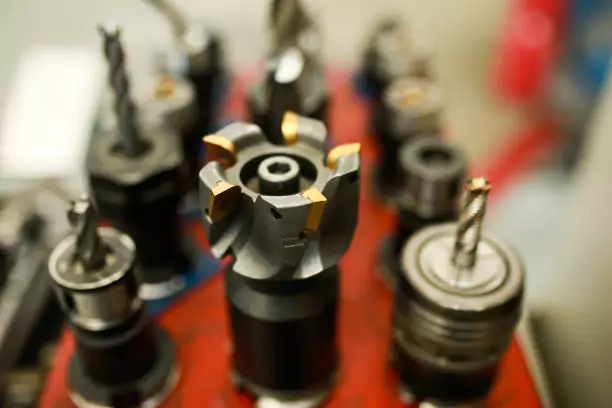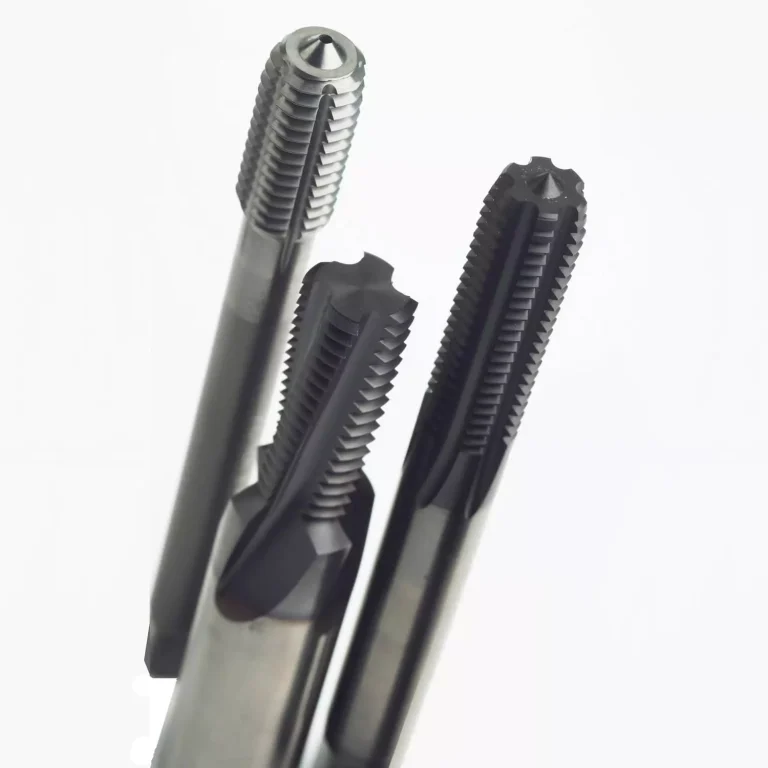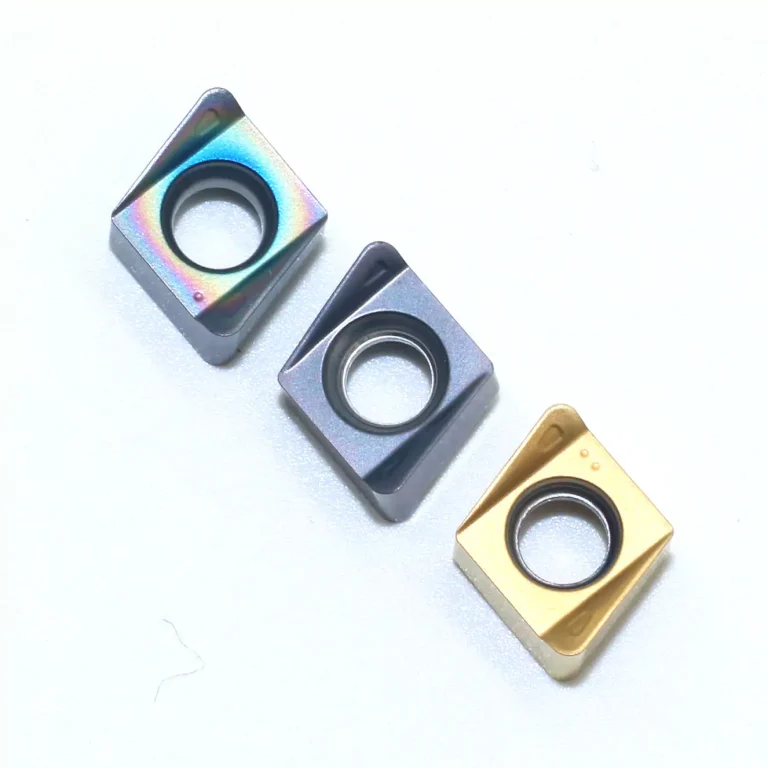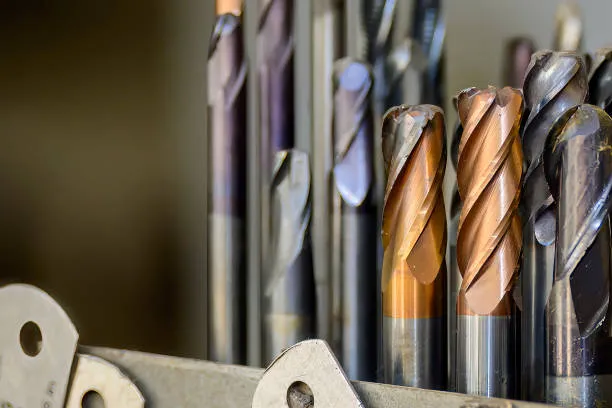Introducing the World of Threading Inserts
Overview of Threading Inserts
Definition
Threading inserts are precision-engineered components used in machining to create internal or external threads on a workpiece. These tools are widely applied in industries such as automotive, aerospace, manufacturing, and construction, playing a crucial role in ensuring durable and consistent thread creation.
Importance in Various Applications
Threading inserts are indispensable due to their ability to enhance the lifespan and performance of threaded assemblies. They prevent issues like thread galling, stripping, and wear, which are common in high-stress environments. Their precision and reliability make them a go-to solution in applications requiring exacting thread integrity and surface finish.
Purpose of the Guide
Target Audience
This guide is designed for both novices and experienced machinists, engineers, and hobbyists interested in mastering the use of threading inserts. Whether for professional use in industrial applications or for individual projects, understanding threading inserts can significantly improve machining outcomes.
Objectives
The primary aim of this guide is to provide comprehensive knowledge about threading inserts, including their types, benefits, geometry, and installation techniques. By the end of this guide, readers should be equipped to choose the right threading insert and utilize it effectively for their specific needs.
What are Threading Inserts?
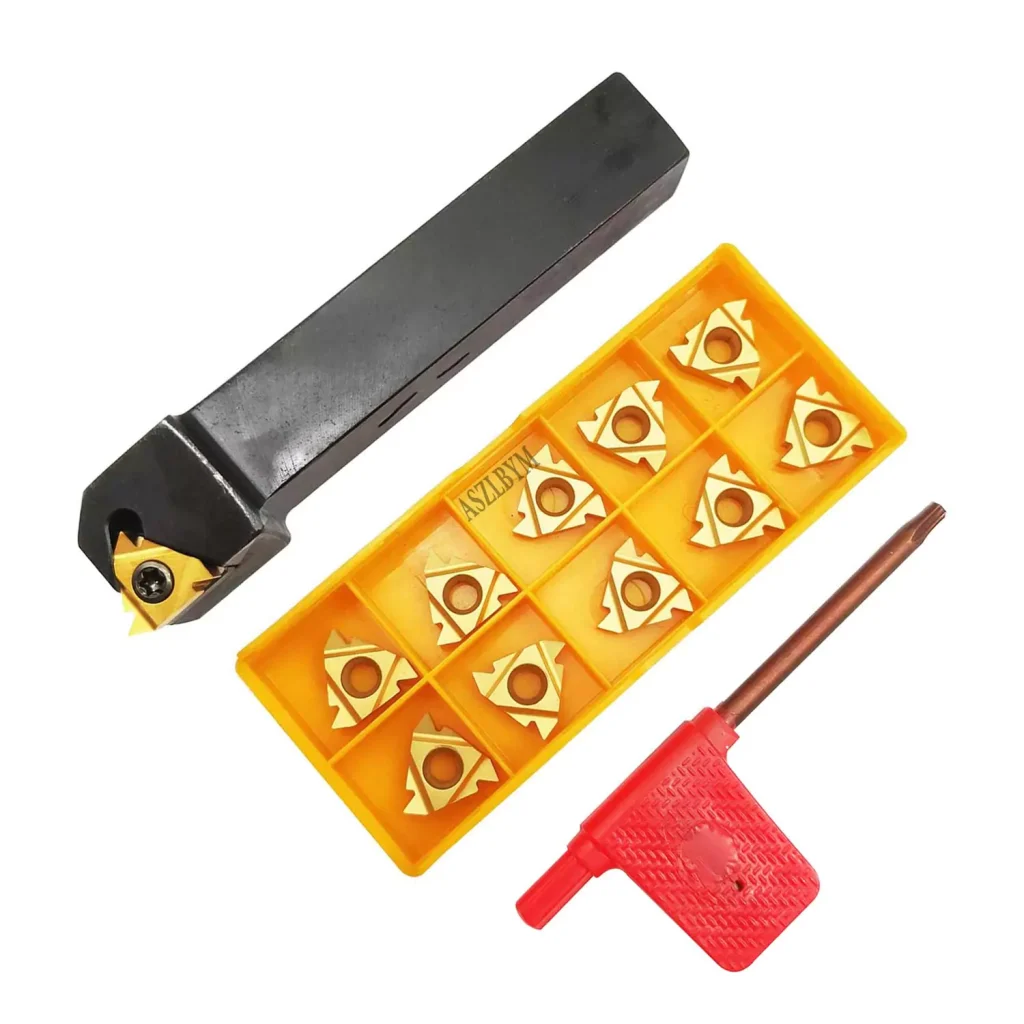
Basic Definition
External and Internal Threads
Threading inserts are utilized to create both external and internal threads. External threading inserts create threads on the outside of cylindrical parts, while internal threading inserts cut threads inside holes. This versatility allows for a wide range of applications, from screws to complex machinery components.
Use in Machine Screws
By using threading inserts, machine screws can achieve a higher level of precision and strength. This practice is particularly valuable in applications where the repeated assembly and disassembly of components are required, ensuring that the threads remain intact over time.
Benefits of Using Threading Inserts
Preventing Thread Damage
Threading inserts significantly reduce the risk of thread damage, a common problem in high-load or high-vibration applications. They provide a more robust and durable threading solution compared to traditional cut or rolled threads.
Reusability
One of the significant advantages of threading inserts is their reusability. Unlike traditional threading methods that may wear out over time, inserts can be replaced or reinstalled, maintaining the integrity of the thread and prolonging the life of the component.
Types of Threading Inserts
Internal Thread Inserts
Definition and Function
Internal threading inserts are designed to cut threads inside a pre-drilled hole. They consist of components such as the crest (the top of the thread), root (the bottom of the thread), and flanks (the sides of the thread) that work together to create precise internal threads.
Components: Crest, Root, and Flanks
The crest, root, and flanks of internal threading inserts are engineered for optimal cutting efficiency. The crest ensures the top edges of the threads are smooth, while the root provides a strong base, and flanks maintain thread shape and integrity.
External Thread Inserts
Definition and Function
External threading inserts are used to create threads on the outside surface of a cylindrical part. These inserts can be installed using various methods such as threading dies or by using lathes equipped with threading tools.
Installation Methods
External threading inserts can be installed through threading dies, which encompass the workpiece and cut the thread as they are turned. Alternatively, CNC lathes with specific threading tools can be utilized for more precise and automated thread cutting.
Comparison of Internal and External Thread Inserts
Applications
Both internal and external threading inserts have their unique applications. Internal inserts are ideal for creating threads inside holes, often used in nuts and bolt assemblies. External inserts are better suited for creating threads on shafts and bolts.
Advantages and Disadvantages
Internal threading inserts offer the benefit of strong, robust internal threads, making them ideal for securing bolts and screws. However, they require precise hole preparation. External inserts provide consistency and ease in creating external threads but may require more complex installation equipment.
Choosing the Insert Geometry
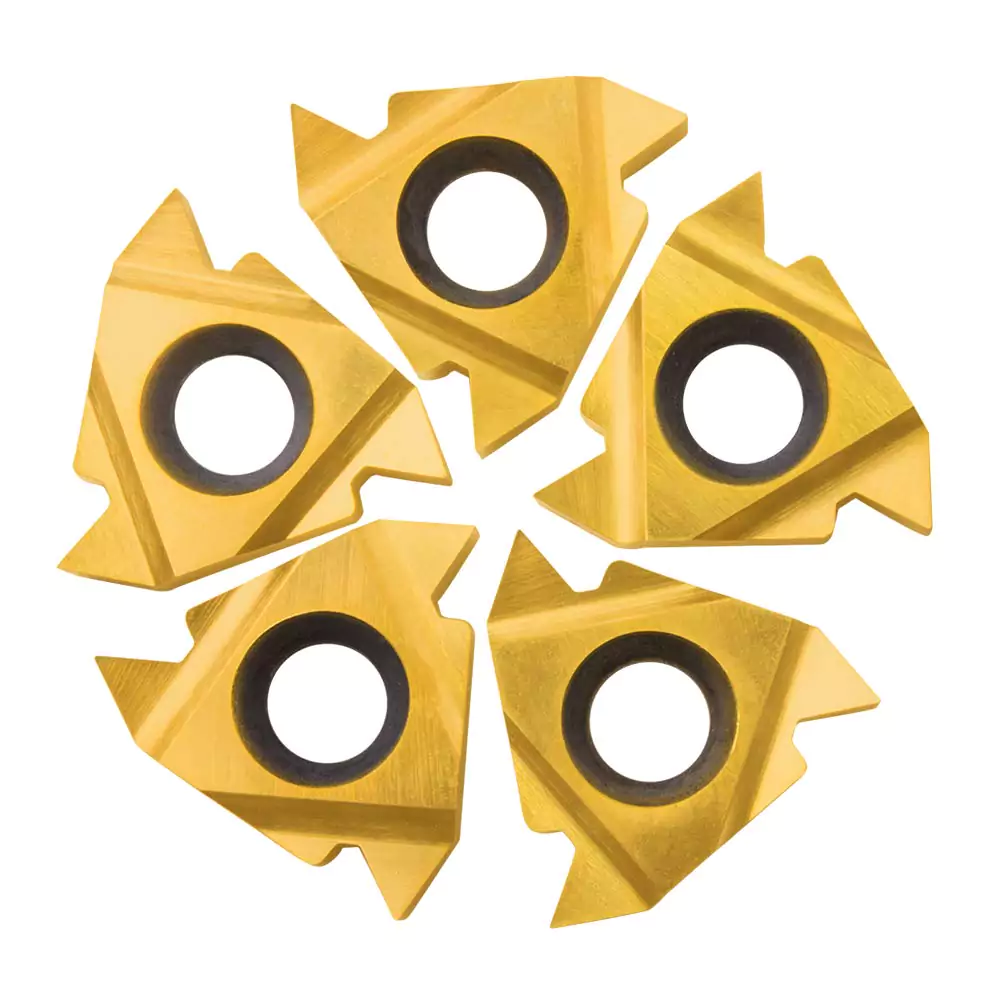
Importance of Geometry
Impact on Tool Life
The geometry of a threading insert directly impacts its tool life. Different geometries are designed to minimize wear and tear, distribute cutting forces evenly, and reduce heat buildup, all of which can extend the lifespan of the insert.
Chip Control and Wear
Proper geometry ensures efficient chip control, preventing chip clogging and reducing wear on the insert. This is particularly important in high-speed machining where effective chip evacuation is critical to maintaining the quality of the thread.
Flat Geometry
Features and Applications
Flat geometry threading inserts are characterized by their flat cutting edges. These are commonly used for general-purpose threading in materials that are not too hard or abrasive.
Advantages
The advantage of flat geometry inserts includes their versatility and ease of use. They are straightforward to install and maintain, making them suitable for various threading applications without the need for specialized equipment.
Sharp Geometry
Features and Applications
Sharp geometry inserts come with acute cutting edges designed for precision threading in harder materials. They offer enhanced cutting performance, particularly in high-strength alloys and tough materials.
Advantages
The primary advantage of sharp geometry inserts is their ability to produce clean, precise threads in high-strength materials. This makes them ideal for applications where thread precision and finish are paramount, such as in aerospace and automotive industries.
Chip-Breaking Geometry
Features and Applications
Chip-breaking geometry threading inserts are designed to break the chips into smaller pieces during the threading process. This geometry is particularly useful in materials that produce long, stringy chips, which can otherwise wrap around the workpiece or tool, causing damage or downtime. Chip-breaking inserts are essential in high-volume production settings where continuous operation is crucial.
Advantages and Limitations
The foremost advantage of chip-breaking geometry is its ability to improve chip control, thereby enhancing tool life and machining efficiency. However, these inserts might be less effective in materials that naturally produce shorter chips, limiting their versatility. Despite this, in suitable applications, the improvement in operational efficiency and reduction in machine downtime can be substantial.
Threading Insert Shapes
Common Shapes
Circular
Circular threading inserts, also known as round threading inserts, are widely used in a variety of applications due to their versatility and ease of use. They provide good cutting performance and are suitable for general-purpose threading tasks.
Diamond
Diamond-shaped threading inserts are designed for precision threading tasks requiring tight tolerances and high surface finishes. They are commonly used in the aerospace and automotive industries where precision is critical.
Triangle
Triangle threading inserts are suitable for applications that need robust and sturdy threads. Their geometry allows for a larger cross-sectional area, making them excellent for heavy-duty threading applications.
Specialized Shapes
Trigon
Trigon-shaped inserts are designed for complex threading operations requiring intricate thread profiles. They provide excellent chip control and are suitable for high-precision machining tasks.
Square
Square threading inserts are used in applications where stability and rigidity are paramount. Their shape allows for strong engagement with the workpiece, making them ideal for heavy-duty machining.
Rectangle
Rectangle threading inserts are specifically designed for threading operations requiring long, continuous cuts. They offer stability and are commonly used in repetitive high-speed threading operations.
Rhombus
Rhombus-shaped threading inserts are utilized in applications that require a combination of strength and flexibility. Their unique shape allows them to handle a variety of thread profiles with ease, making them a versatile option for many machining tasks.
Pentagon
Pentagon threading inserts are less common but are used in specialized applications requiring a unique thread profile. They offer a balance between strength and cutting efficiency, suitable for medium-duty threading tasks.
Hexagon
Hexagon threading inserts provide multiple cutting edges, making them highly efficient for high-volume production settings. They are commonly used in automatic lathes where tool life and efficiency are critical.
Octagon
Octagon threading inserts are designed for applications requiring high efficiency and precision. Their multiple cutting edges allow for extended tool life and are suitable for high-speed threading operations.
Choosing Insert Types
Full Profile Inserts
Features and Benefits
Full profile inserts create a complete thread profile in a single pass, which includes the crest, root, and flanks. This ensures that the threads produced are consistent and meet stringent dimensional requirements. Full profile inserts reduce machining time and improve thread quality by eliminating the need for multiple passes.
Applications
Full profile inserts are used in high-precision applications where thread quality and dimensional accuracy are critical. They are commonly used in aerospace, automotive, and medical device manufacturing, where exacting thread standards are required.
V-Profile Inserts
Features and Benefits
V-profile inserts are designed to create threads with a V-shaped profile. These inserts are versatile and can be used in a variety of threading applications, offering a good balance between cutting efficiency and thread quality.
Applications
V-profile inserts are suited for general-purpose threading tasks in a wide range of materials. They are commonly used in manufacturing industries where versatility and ease of use are required.
Multi-Point Inserts
Features and Benefits
Multi-point inserts feature multiple cutting points that allow for the simultaneous cutting of multiple thread grooves. This significantly reduces the threading time and increases production efficiency. They are particularly beneficial in high-volume production settings.
Applications
Multi-point inserts are ideal for high-speed, high-volume threading operations. They are commonly used in automated production lines where efficiency and throughput are critical.
Tips on Using Thread Inserts
Basic Types
Thread-In Inserts
Thread-in inserts, also known as screw-in inserts, are installed by screwing them directly into a pre-drilled hole. These inserts are easy to install and provide strong threads for holding bolts and screws.
Press-In Inserts
Press-in inserts are installed by pressing them into a pre-drilled hole. They provide a secure fit without the need for glue or other adhesives. Press-in inserts are ideal for applications where quick installation and moderate thread strength are required.
Material Considerations
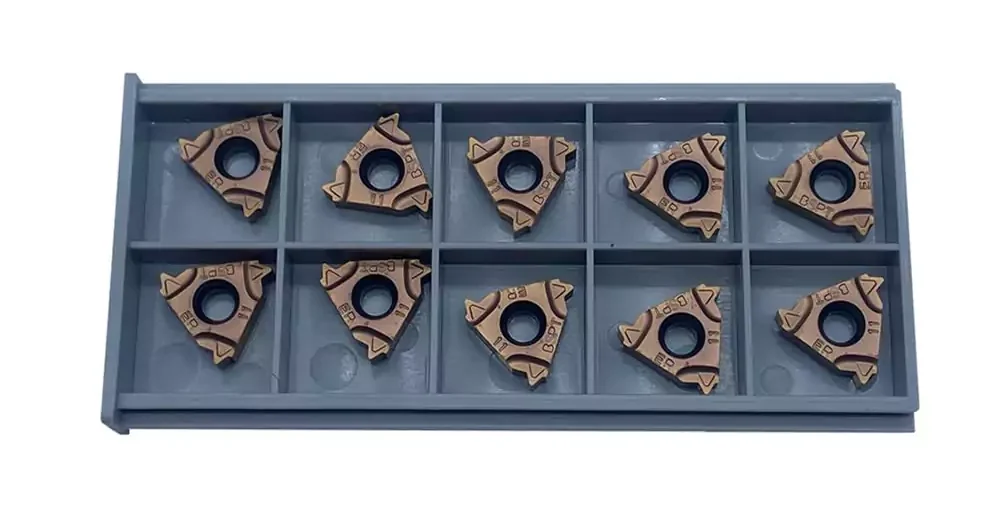
Softwoods and Plywood
For softwoods and plywood, thread-in inserts are typically the best choice. These materials are relatively easy to work with, and the inserts can be installed without the risk of splitting or damaging the wood.
Hardwoods
When working with hardwoods, press-in inserts or inserts with pre-applied adhesive are recommended. Hardwoods can be more challenging to work with due to their density, and using the right insert ensures a secure and long-lasting thread.
Installation Techniques
Drilling and Sizing Holes
Properly drilling and sizing the holes is crucial for the successful installation of threading inserts. The diameter of the drilled hole should match the specifications of the insert to ensure a tight fit. Mis-sized holes can lead to weak threads or difficulty in installation.
Using Epoxy for Additional Strength
In applications requiring additional thread strength, epoxy or other adhesives can be used during installation. The adhesive creates a strong bond between the insert and the material, enhancing the overall strength and durability of the threads.
How to Use Threaded Inserts
Step-by-Step Guide
Preparing the Hole
Begin by drilling a hole that matches the outside diameter of the threaded insert. Use a depth stop on the drill to ensure that the hole is of the correct depth. Clean the hole thoroughly to remove any debris or dust, which could affect the insert’s fit.
Inserting the Insert
For thread-in inserts, align the insert with the hole and begin turning it clockwise until it is fully seated. For press-in inserts, align and press the insert into the hole firmly, ensuring it sits flush with the surface of the material.
Tools and Equipment
Drills and Depth-Stops
Using a drill with a depth-stop ensures that holes are drilled to the precise depth needed for the insert. This precision is crucial for maintaining the integrity and strength of the threaded joint.
Screwdrivers and Impact Drivers
For thread-in inserts, utilize a screwdriver or impact driver to ease the installation process. These tools provide additional torque, making it easier to screw the insert into place without damaging it.
Types of Inserts
Circular Threaded Inserts
Circular threaded inserts are used for general-purpose applications. They provide reliable performance in a variety of materials, making them a versatile choice for many threading tasks.
Cage Nuts
Cage nuts are specialized inserts used primarily in rack-mounted equipment. They allow for the easy and secure installation of equipment in server racks or cabinets.
Externally Threaded Inserts
Externally threaded inserts are used when a threaded attachment is needed on the surface of a material. These inserts provide a robust threading solution for attaching components externally.
How to Install Thread Inserts
Preparation
Removing Old Threads
Before installing a new thread insert, any damaged or worn-out threads must be removed. Use a thread tap to clean out the old threads and ensure the hole is ready for the new insert.
Preparing Countersinks
Countersinks may be required for certain types of inserts to ensure they sit flush with or below the surface of the material. Use a countersink bit to prepare the hole as needed.
Tapping and Installing
Tapping New Threads
If necessary, tap new threads into the hole using a tap wrench and appropriate-sized tap. This step ensures that the new insert will fit securely and provide strong threads for the application.
Installing Inserts
Carefully install the threading insert into the prepared hole. For added security, thread-locking compounds can be applied to the insert before installation. This will prevent the insert from backing out under load.
Finalizing Installation
Positioning Below Surface
Ensure that the insert is positioned slightly below the surface of the material to protect the threads and prevent the insert from being dislodged during use. A properly seated insert will enhance the durability and reliability of the threaded connection.
Driving Keys
For key-locking inserts, use a tool to drive the locking keys into place. This step secures the insert within the hole and prevents it from rotating or coming loose during operation.
Conclusion
Summary of Key Points
Threading inserts are essential components in machining, providing durable and precise threads for a wide range of applications. Understanding the different types, geometries, shapes, and installation techniques is crucial for choosing the right insert and ensuring successful threading operations.
Final Thoughts
Mastering the use of threading inserts involves knowledge and precision. By following the guidelines and tips provided in this comprehensive guide, machinists and engineers can enhance their threading processes, leading to improved performance and longevity of machined parts. Whether working in industrial applications or on individual projects, threading inserts are invaluable tools for creating strong, reliable threaded connections.
